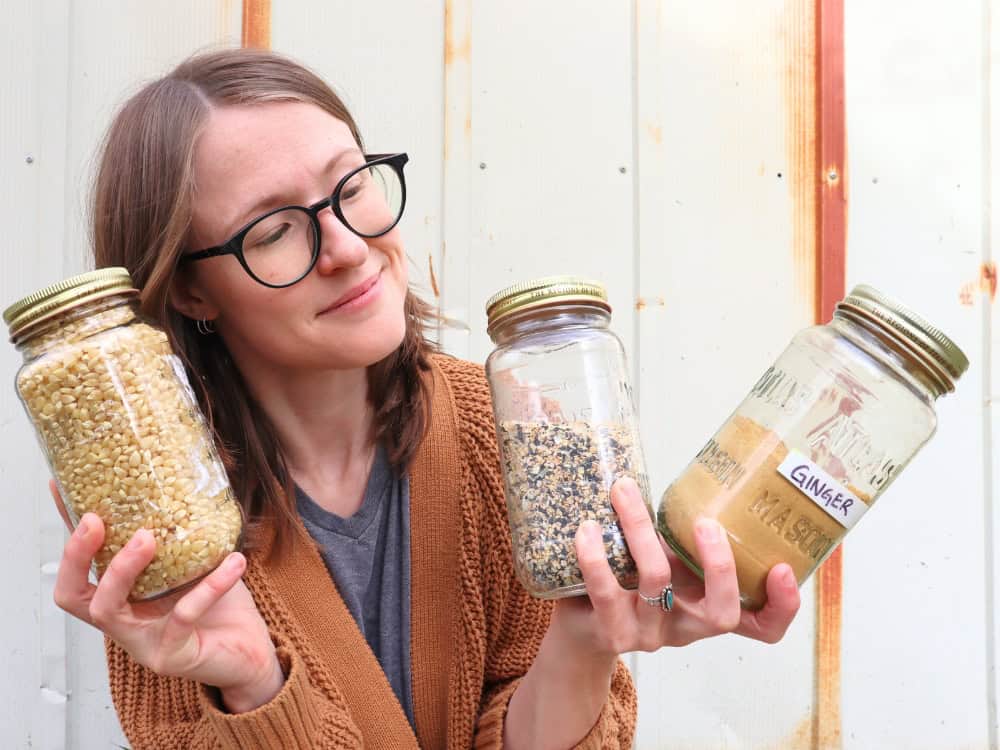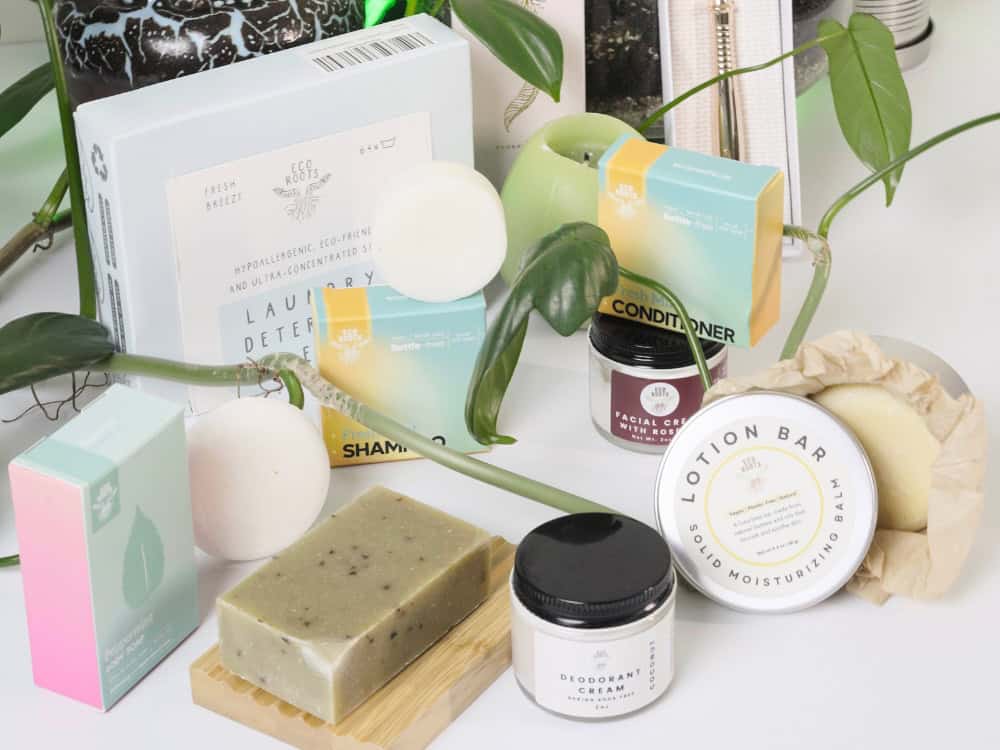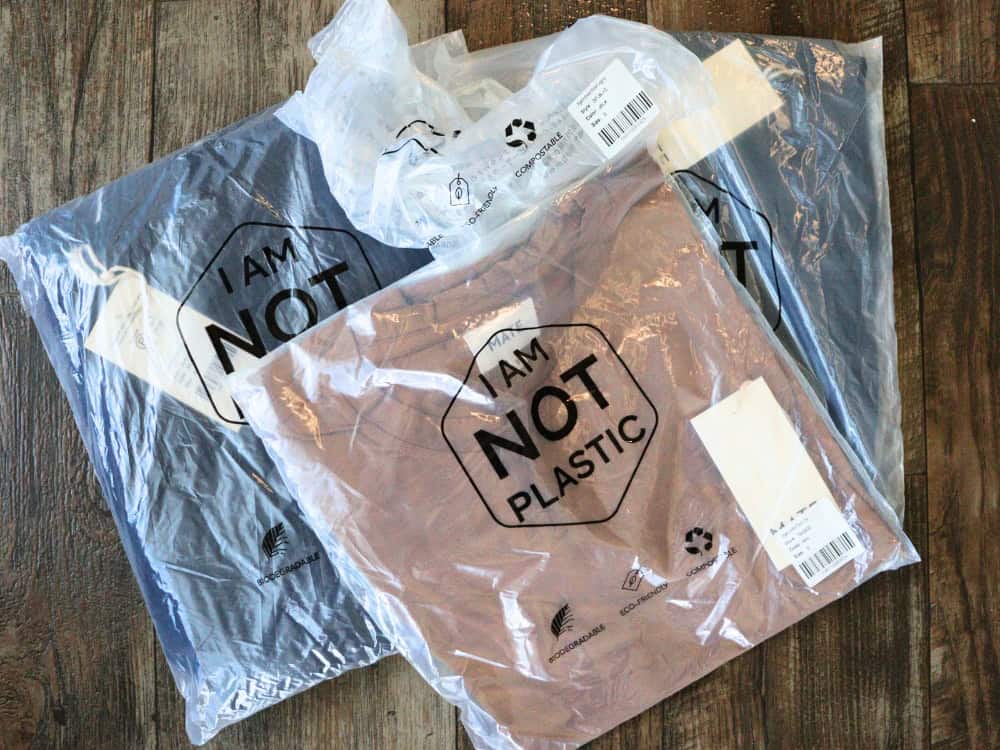
What Is The Zero Waste Movement & Is It Having An Impact?
While many people think of the zero waste movement as having a mason jar for a trashcan, it’s far less radical than it seems.
Making the simple decision to carry a handkerchief isn’t a new idea, and washing your counters with a reusable cloth may not feel life-changing.
So, maybe you’re not sure you’re having an actual impact?
Take a deep breath. Give yourself a pat on the back. The signs are good.
Since the early days of zero waste, with legends like Bea Johnson pioneering the movement, and then David Attenborough’s Blue Planet II and, of course, the terrifying movie A Plastic Ocean, the world is finally embracing many of the concepts championed by the zero waste movement.
Here, we cover a brief history of the movement, its impact, and where it’s headed.
The Full List Of Zero Waste Campaign Considerations
- What is the zero waste movement?
- Zero waste & conscious consumerism
- Zero waste product innovation
- Bulk stores are blossoming
- Big brands are joining in
- The future is circular
1. What Is The Zero Waste Movement?

Low-waste living isn’t a new concept.
Before the disposable era, repairing, reusing, and repurposing items was the norm. Milk was delivered in glass bottles that were returned and reused, clothes were repaired and handed down, and cloth nappies were standard. We’re pretty sure previous generations would have been shocked by the vast amounts of single-use plastic that began to enter the world from the 1950s onwards.
The zero waste movement formed in response to this throw-away culture, overconsumption, and the growing awareness of the environmental impact of plastic.
Origins The Of Zero Waste Concept
The term “zero waste” was (very likely) first used by a California-based company, “Zero Waste Systems Inc.” founded in the 1970s by chemist Dr. Paul Palmer.
However, it is also often credited to Daniel Knapp as emerging alongside his “Total Recycling” concept. In the 1990s, Knapp founded Urban Ore, a salvaging operation in Berkeley, California. Its mission?
“To end the age of waste.”
In 1996, Knapp’s Total Recycling concept spread to Australia with the release of the Australian Capital Territory’s “No Waste by 2010” strategy, and back on home soil, Zero Waste USA, formerly the Grass Roots Recycling Network (GRRN), was formed.
In 2002, Richard Anthony (board member of the GRRN), brought together a team of experts (including Daniel Knapp) to bring the zero waste discussion to a resource conference in Geneva. Meeting after meeting followed, garnering worldwide interest, and the Zero Waste International Alliance (ZWIA) was formed in 2003.
Zero Waste Becomes A Lifestyle Movement
So, how did zero waste enter the blogging sphere and become a lifestyle movement?
In 2009, Bea Johnson launched her blog Zero Waste Home, followed in 2013 by her book of the same name that introduced the 5 R’s: Refuse, Reduce, Reuse, Recycle, and Rot.
And, well, it caught on. Other zero waste blogs followed, including Lauren Singer’s Trash Is For Tossers and Kathryn Kellogg’s Going Zero Waste, and an online zero waste community was born.
The “Mason Jar Challenge” took off and the internet was full of pictures of people’s trash jars.
While it has received several criticisms, this early symbol of the zero waste movement was at least attention-grabbing. It helped spread awareness of many of the issues involved in tackling the trash problem.
2. The Zero Waste Movement & Conscious Consumerism
The zero waste movement shines a light on how many everyday throwaways end up in landfill. Thanks to zero wasters and other passionate sustainability champions, businesses are responding and hurrying to put sustainable products on the market. After all, there’s a growing demand for it.
In 2018, Nielsen released an encouraging report on how sustainability sells. They discovered that items with specific sustainability claims grew twice as fast as other items in their category. Their advice to companies?
“No matter what, sustainability is no longer a niche play: your bottom-line and brand growth depend on it.”
As a conscious consumer, this makes life easier. As we continue to put pressure on the market through our purchasing power, it becomes easier to find zero waste swaps for the things we use day to day (like bamboo toothbrushes and plastic-free water bottles).
It also helps make zero waste and sustainable consumption choices more accessible to a wider group of people.
3. Zero Waste Product Innovation

Businesses are continuing to listen. Each year, more and more sustainable and zero waste products hit the market. The market’s idea of sustainability has expanded to include waste-free packaging and more transparency regarding the environmental impact of production.
The skincare and beauty industry, for example, is notorious for its use of plastic. Shampoo bottles, lotion bottles, deodorant tubes, lipstick tubes, etc, amount to 120 billion units of plastic per year.
But today, we can choose between dozens of zero waste deodorants in compostable tubes and ditch plastic bottles for good courtesy of shampoo and conditioner solid bars.
As a result of this plastic-free movement, new waste-free products and packaging solutions are invented every year, steadily replacing problematic consumer items like single-use plastic coffee pods, which now have a compostable alternative thanks to forward-thinking sustainable coffee brands.
4. Bulk Stores Are Blossoming

Another exciting sign of the times is the proliferation of zero waste stores, which have been popping up increasingly over recent years. You can take your own reusable containers and fill up on everything from fair-trade coffee to laundry soap.
If your town doesn’t have package-free stores, you’ll likely find refill sections in natural grocery stores, or you can also check out some of the online bulk stores.
For example, Plaine Products has been leading the personal care product plastic-free movement for years.This circular brand ships its shampoo, conditioner, lotion, and body wash refills in reusable aluminum bottles along with a prepaid envelope for sending back your empties.
To clean other parts of your life, Greatfill offers refillable cleaning products in returnable pouches that they’ll then recycle and reuse.
5. Big Brands Are Joining In

Shopping at major retailers can be challenging for those of us who live a zero waste lifestyle. Their bulk sections aren’t always generous (if they exist at all), ethics in their sourcing policies and raw materials are often lacking, and many of their products come wrapped in plastic.
It’s not all bad, though. In addition to the burgeoning selection of sustainability-focused stores, major retailers (at least from a waste perspective) are starting to wake up and smell the garbage.
We all know Walmart isn’t perfect. s one of the world’s largest retailers, Walmart’s environmental footprint is complex, but the giant has set some ambitious waste-reducing goals, including making its own operations in the U.S. and Canada zero waste by 2025.
Target is another example. By 2040, it aims for all of its own brand items to be created with a circular future in mind.
Five years ago, Kroger launched its Zero Hunger | Zero Waste initiative. So far, they’ve rescued 582 million pounds of fresh food and diverted 82% of total waste.
On the fashion front, MUD Jeans turns old jeans into new ones and offers the option to lease a pair instead of buying, and Patagonia, the OG sustainable clothing brand incentivizes customers to trade in old clothing via its Worn Wear program.
Though for us, supporting small, local, ethical businesses is absolutely still the way to go.
6. The Future Is Circular

While reducing our waste is important, we need to consider the whole life cycle of a product. Most waste is created “upstream” long before you buy a product.
The Zero Waste International Alliance defines zero waste as:
“The conservation of all resources by means of responsible production, consumption, reuse, and recovery of products, packaging, and materials without burning and with no discharges to land, water, or air that threaten the environment or human health.”
In other words, it’s a holistic approach that opposes the current linear trajectory of the take-make-waste economy—AKA the one-way street to landfill—and calls for developing a circular economy, a model of production and consumption based on keeping products and their materials in use for as long as possible.
This requires change at all levels. At an individual level, we can invoke change via activism and voting with our wallets for circular economy companies that are working to close the loop.
So whether you’re focused on your own zero waste journey or working on a zero waste campaign for a business or community initiative, keep going!
There’s been lots of progress over the last fifteen years since Bea Johnson launched her inspirational blog and while there’s still heaps of work to do, the zero waste movement is having an impact.
You don’t have to do it perfectly. We know zero waste is an ideal, but every choice you make leaves its mark. Anne Marie Bonneau from the Zero Waste Chef said it best: “We don’t need a handful of people doing zero waste perfectly. We need millions of people doing it imperfectly.”
Did you know we Have a Newsletter?
We cover the latest in sustainable living, fashion, zero waste, beauty, travel, finance and more…
Pin these:





